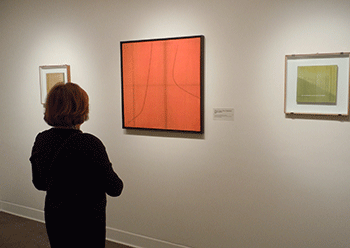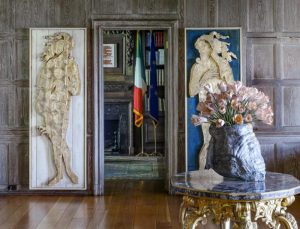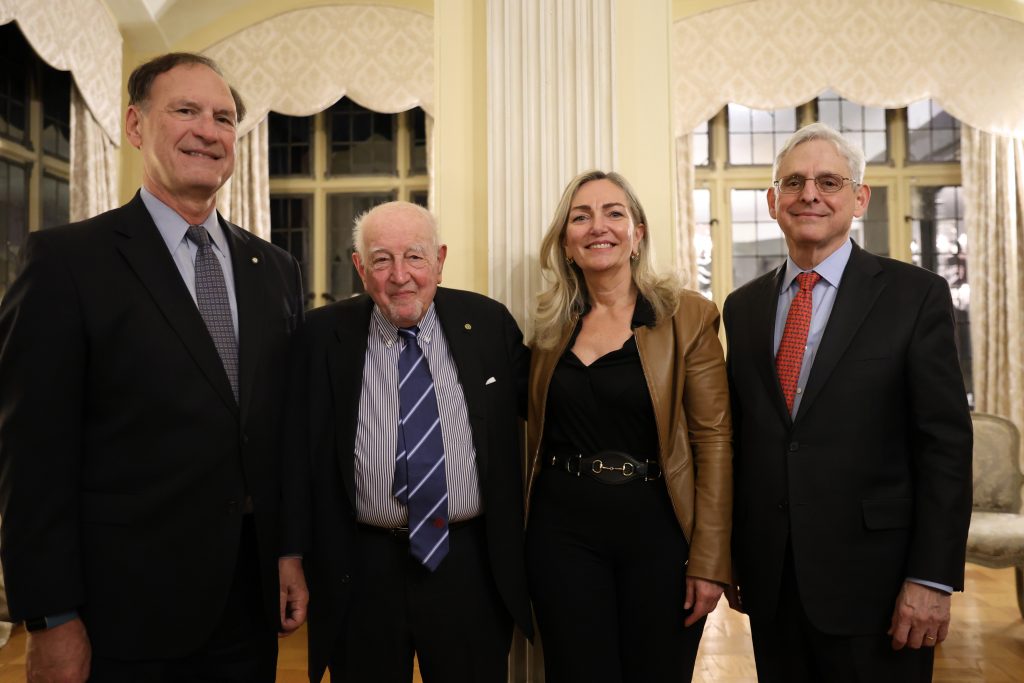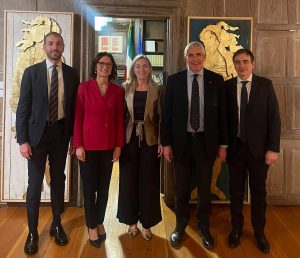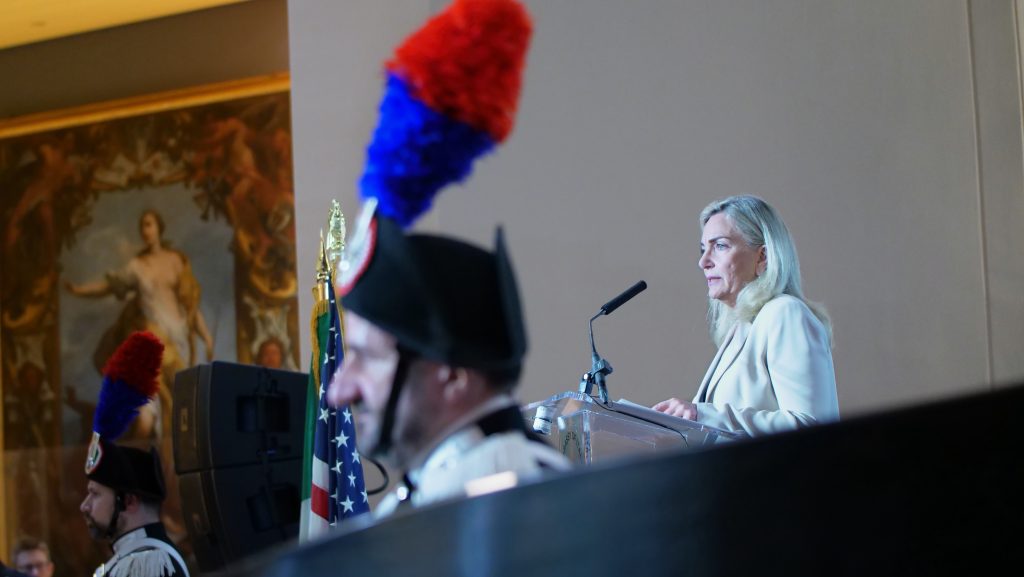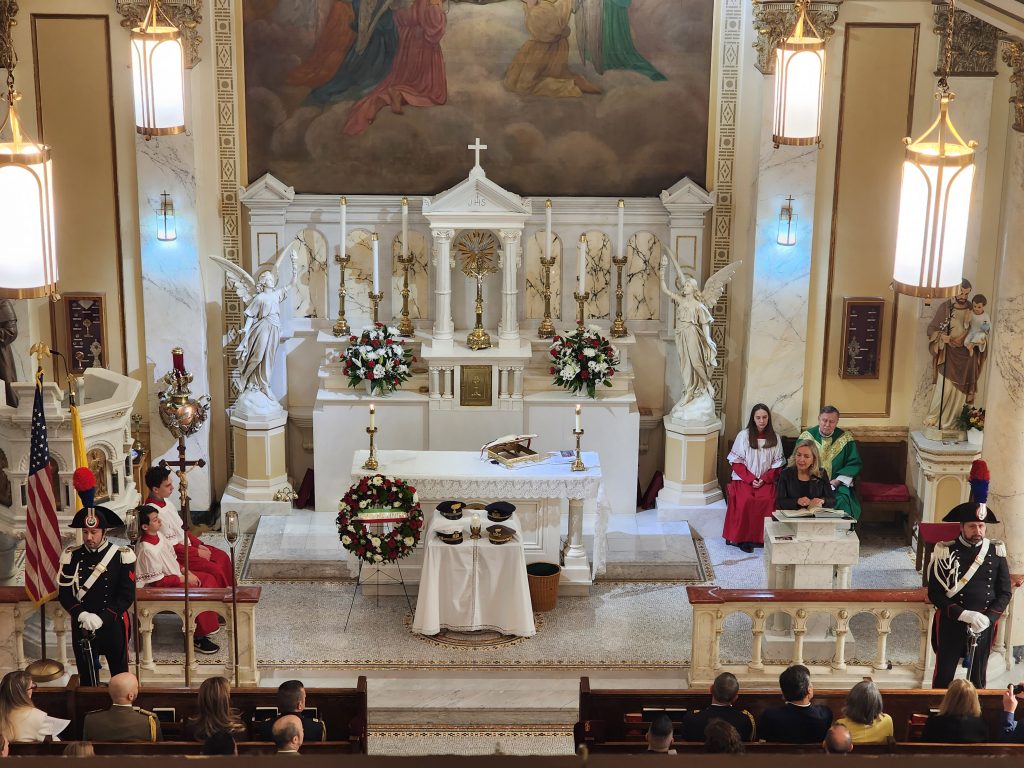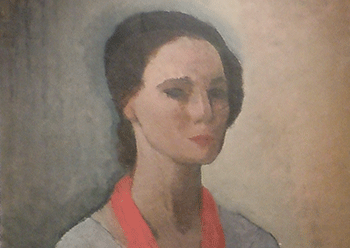
Bice Lazzari, self-portrait
The National Museum of Women in the Arts (NMWA), in collaboration with the Embassy of Italy, presents Bice Lazzari: Signature Line, on view May 10 through Sept. 22, 2013. The exhibition features 25 paintings and drawings by Lazzari (1900–81), one of Italy’s most revered modern artists. Discouraged from studying the figure in art school in the 1910s because of her gender, she became a prominent decorative arts designer, and in the mid-1930s, focused her attention on abstraction. She is renowned for her later poetic abstract paintings that resemble graphs, maps, and musical staffs and notes, echoing her lifelong passion for music.
- Bice Lazzari, self-portrait
Works are drawn from the Archivio Bice Lazzari in Rome, the repository for many of Lazzari’s artworks, writings, designs and other primary resources, as well as from NMWA’s collection. Bice Lazzari: Signature Line is presented as part of 2013 – Year of Italian Culture in the United States, an initiative organized by Italy’s Ministry of Foreign Affairs and the Embassy of Italy, Washington, D.C. “These abstract, geometric compositions are imbued with a sense of lyricism that proves Bice Lazzari to be one of the most innovative Italian abstractionists of the 20th century,” says NMWA Director Susan Fisher Sterling. “We are pleased to partner on this exhibition with the Embassy of Italy and the Archivio Bice Lazzari, bringing the creative contributions of this talented artist to a wider audience.”
BACKGROUND
Born in Venice in 1900, Lazzari demonstrated talent for both music and art from an early age. She first enrolled at the Conservatorio Benedetto Marcello,studying piano and violin, before moving on to Venice’s Accademia di Belle Arti to study painting and drawing. Discouraged from studying the human figure, Lazzari instead pursued design, graduating in 1918 with a diploma in Ornamental Design and Decoration.
Lazzari’s earliest works, including still lifes, landscapes and portraits, demonstrate her skill as a figurative painter. However,she began to experiment with abstraction as early as 1925. Lazzari increasingly explored abstract form while continuing to work in the applied and decorative arts. She developed dynamic geometric designs for fabrics, tapestries, murals and mosaics. In 1935, Lazzari moved to Rome, where architecture and the decorative arts were being actively promoted. Completed in 1939, L/11 demonstrates Lazzari’s early forays into purely abstract painting. After World War II, she was finally able to dedicate herself to painting, and in the 1950s, Lazzari began to receive recognition for her work in the fine arts.
In Lazzari’s drawings and paintings, she attempted to capture a sense of infinity by combining signs, symbols and color as in her later work, also titled L/11, painted in 1950. She abandoned the finite world and its forms in favor of the free expression of the ‘non-form,’ adopting the informel style, the prevailing mid-20th century movement in abstract European painting.
Further simplifying her art in the 1960s, Lazzari’s works often featured graphic, geometric shapes and lines applied against a monochromatic background, such as in the painting ‘Misure’ Doppio Ritmo (‘Measures’ Double Rhythm) (1967) in NMWA’s collection, a work gifted to the museum in 2004 by Archivio Bice Lazzari. While many of her compositions resemble graphs or
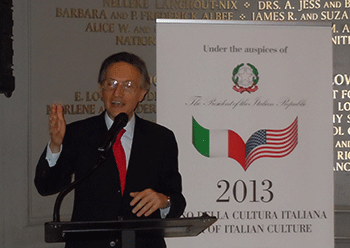
maps, Lazzari’s lifelong passion for music is evident in the forms that resemble musical staffs and notes. Though her gestures are precise and rigorous, she created her compositions freely and drew by hand, maintaining her personal touch. Lazzari expressed herself with spare elements, composing her works by drawing lines with pencil, ink and pastel often over washes of soft color.
Bice Lazzari: Signature Line is organized by the National Museum of Women in the Arts, in collaboration with the Embassy of Italy, Washington, D.C. and the Archivio Bice Lazzari, Rome, with additional support from the members of NMWA.
SOURCE: NMWA
